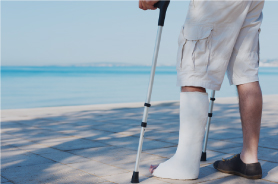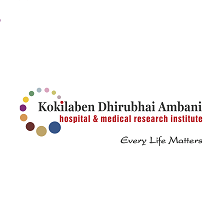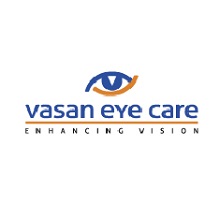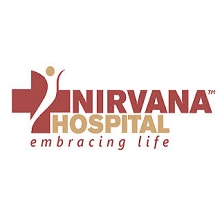Medical Treatments
- Urology Treatment
- Bariatric Obesity Surgery
- Oncology Cancer Treatment
- Cardiology
- Cosmetic Plastic Surgery
- ENT-Head And Neck Surgery
- Infertility Or IVF Treatment
- Joint Replacement Surgery
- Spine Surgery
- Organ Transplant
- Neurology
- Orthopedic Surgery
- Nephrology
- Stem Cell Therapy
- Endocrionology Or Diabetes
- 3D Liposuction Abdomen Lower Back
- Breast Lifting Implant
- Paediatrics Child Neonate
- Robotic Surgery
- Dentistry Dental Implant
- Gynaecology
- Pulmonology /Chest /Respiratory
- Dermatology And Venerelogy
- Opthalmology Eye Treatment
- Gastroenterology Or Hepatology
- Cyber Knife Radiosurgery
- Bone Marrow Surgery Transplant

Orthopedic Surgery
Orthopedic Surgery is generally called as joint replacement surgeries & include knee replacement, hip replacement, rotator cuff repair, ACL, PCL & many more procedures. If you are an active participant of physical activities like in sports or heavy duty job-works, you might face some issues with your joints & need better medical assistance to overcome it. Here is complete detailed information regarding orthopedic surgery, types, causes & treatment options
What is Orthopedic Surgery?
Orthopedics involve, treatment of musculoskeletal system including bones, joints, ligaments, tendons, muscles & spine. This medical specialty is interlinked with associate specialties like Neurology, Physiotherapy, Psychiatry and Pain specialists. Orthopedic problems may be either due to age-related wear & tear, birth defects, infections, trauma or some other medical conditions that also affect the musculoskeletal system. Though these problems are not life-threatening but they definitely prevent you from enjoying a normal life-style. The pain & discomfort these conditions bring along hinder the simplest day-to-day activities. Joint replacement & total hip replacement are some of the main surgery options for patients across the world suffering from progressive arthritis.
Best Orthopedic Surgery in India with AVAN MediTour:
India is the chosen destination of patients across global nationalities who are looking forward to total knee replacement & total hip replacement surgeries to solve their orthopedic problems. Orthopedic doctors in India are some of the best surgeons who have been trained in the west. Many AVAN associated healthcare facilities are adept in most joint replacement surgeries, in a capacity to solve a wide range of orthopedic medical conditions.
Knee Replacement Surgery in India
Total Knee Replacement Surgery, Knee Arthoplasty or Artificial Knee Replacement is an ideal procedure to relieve pain & disability of weight-bearing surfaces of knee-joints. It is also commonly applied for conditions like osteoarthritis, psoriatic arthritis & rheumatoid arthritis. Generally reserved for people over 50 years of age, total knee replacement surgery is an ideal option to resolve your painful knee due to severe osteoarthritis. Performed under general anesthesia or spinal/epidural anesthesia, this surgical procedure involves an 8 to 12 inch cut in front of the knee. Damaged parts of patient’s joint are removed from surface of bones & stunt surfaces are then reshaped to hold metal or plastic artificial joint parts. Attached to thigh bone, shin & knee-cap, with cement & special materials, these artificial parts form into the knee joint when fit together. This new joint, like the original one, relies on surrounding muscle & ligaments for essential support & normal function.
Partial Knee Replacement, Unilateral Knee Replacement & Bilateral Knee Replacement are associate procedures which doctors may like to consider while designing a treatment plan for your knee-joint problem. Other popular knee surgeries include Arthroscopic Meniscus Repair Surgery, ACL Surgery & PCL Reconstruction Surgery. Like in many other types of surgeries, minimally invasive total knee replacement techniques have revolutionized total knee replacement surgery as well. Key characteristic of this specialized technique hold good here too & surgeons can do without large incisions to perform the knee replacement surgery using minimally invasive techniques.
Causes for Knee Replacement
- Obesity
- Trauma
- Joint Instability
- Nutrition
- Medications
- Hormonal Changes
- Repetitive Trauma
- Poor Alignment & Biomechanics
- Age & Genes
Types of Knee Replacement
Four Major types of Knee Replacement Surgeries
- Total Knee Replacement: In this surgery most of the time the procedure involves replacing the joint surface at the top of shin bone & joint surface at the end of thigh bone.
- Unicompartmental (Partial) Knee Replacement: If only one side of your knee is affected by arthritis, most of the time it is inner side of the knee, which includes the possibility of Uni-compartmental (Partial) Replacement.
- Kneecap Replacement or Patellofemoral Arthroplasty: This replacement surgery includes replacement just under-surface of the kneecap & its trochlea. It is also known as patellofemoral joint arthroplasty or a patellofemoral replacement.
- Complex or Revision Knee Replacement: Few individuals might require more complex knee replacement surgery. In this generally it utilizes a longer stem which supports the component to be stably fixed into the bone cavity.
Cost of Knee Replacement in India
India is a specialist destination for Knee Replacement procedures. Knee Replacement Surgery costs in India are affordable & just a fraction of what you normally pay in the western developed countries. Offering high-tech medical solutions to a large variety of healthcare problems, it is no wonder that India is one of the most favored global health care destinations for orthopedic treatments today.
Hip Replacement Surgery in India
Hip Replacement Surgery or Hip Arthoplasty is presently the most common orthopedic operation which is generally conducted in cases of arthritis pain & hip fractures. Correct selection of the right prosthetic replacement implant is crucial in this surgical procedure. The surgeon removes damaged sections of hip joint with parts constructed of metal or hard plastic during hip replacement. Eventually this prosthesis helps reduce pain & improve functions as well.
It would be wiser to consider hip replacement surgery as an option if hip pain is interfering with daily activities & conservative treatments have not been helpful. Generally, damage due to progressive arthritis is most common reason for patients across the world seeking hip replacement surgery. Other conditions calling for this surgical procedure include osteoarthritis, rheumatoid arthritis & osteonecrosis. Associated joint replacement surgery procedures for hips include Hip Resurfacing Surgery, Unilateral Hip Replacement & Bilateral Hip Replacement techniques.
Causes of Hip Dislocation
- Motor vehicle collisions is the main reason of traumatic hip dislocations
- Fall from a significant height
- Industrial accidents can also dislocate hips
- Other related common injuries with hip dislocations include fractures in pelvis, legs, back, abdomen, knee & head injuries
- Types of Hip Replacement Surgeries
Two Major Types of Hip Replacement Surgeries
- Total Hip Replacement: In a total hip replacement, part of the thigh bone (femur) including the ball (head of femur) is removed & a new, smaller artificial ball is fixed into the rest of the thigh bone.
- Metal-on-Metal Hip Resurfacing: Instead of removing head of the thigh bone & replacing it with an artificial ball, a hollow metal cap is fitted over the head of the thigh bone.
Cost of Hip Replacement in India
India is a specialist destination for Hip replacement procedures. Hip replacement cost in India are affordable & just a fraction of what you normally pay in the western developed countries. Offering high-tech medical solutions to a large variety of healthcare problems, it is no wonder that India is one of the most favored global health care destinations for hip replacement today.
Carpal Tunnel Syndrome Surgery in India
Carpal Tunnel Release surgery is arm & hand related medical condition normally causing tingling & numbness as symptoms. The cause underlying this condition is a pinched nerve in the wrist. Associated factors contributing to carpal tunnel syndrome problems include basic anatomy of wrist, patterns of hand use & certain underlying health issues. Carpal tunnel is a narrow passage bound by bones & ligaments located along the palm side of wrist. The tunnel effectively protects a major median nerve to hand along with nine tendons helping bend fingers. Compression of this nerve produces tingling, numbness & subsequently weakness of hand which characterizes problems associated with carpal tunnel syndrome. Proper treatment effectively relieves tingling & numbness sensations from index, middle fingers & thumb so as to restore normal wrist & hand functions.
Arthroscopic Surgery
Arthritis basically is inflammation of one or more joints in the body. Main symptoms in arthritis include stiffness & joint pain which typically become worse with aging. Osteoarthritis & rheumatoid arthritis are the most common forms of this medical condition. Osteoarthritis causes cartilage to break down. Cartilage is the hard, slippery tissue covering ends of bones where they form joints. Rheumatoid arthritis is an autoimmune disorder which targets lining of joints in body. Other varieties of arthritis are also caused in association with underlying diseases, infections, uric acid crystals, psoriasis or lupus. Treatments of arthritis vary depending upon the type of ailment. Some common signs & symptoms of arthritis include severe pain, swelling, stiffness, redness & decrease in range of motion. General risk factors for arthritis include obesity, family history, sex, age & previous joint injury. Severe arthritis may even make daily activity challenging
Shoulder Surgery in India
Shoulder Replacement Surgery is a procedure where part or the entire glenohumeral joint is replaced by prosthetic implant. This type of joint replacement surgery is normally conducted to fix severe physical joint damage or to relieve arthritis pain. Shoulder Replacement Surgery is an ideal opportunity for treatment of severe arthritis of shoulder joint caused by wearing of cartilage lining. Painful bone-on-bone arthritis happens due to this condition. This condition is extremely painful & can restrict motion. Though it can be managed with medications & lifestyle adjustments, there comes a time when surgical intervention is absolutely necessary. Shoulder Replacement Surgery is considered only when pains worsen. Once surgery is completed, the shoulder joint looks & functions like original. Arthroscopic Shoulder Surgery which is also known as Rotator Cuff Repair Surgery is an excellent procedure to solve your medical problems relating to the shoulder joint.
Ankle Replacement Surgery
Ankle Replacement Surgery is also known as Ankle Arthoplasty. This surgical procedure is meant to replace damaged articular surfaces of ankle joint with prosthetic material. Ankle joint replacement choice as surgery is fast replacing conventional fusion of bones (arthrodesis) among patients. Restoration of range of motion is key feature in favor of ankle replacement in comparison with arthrodesis. The main objectives of prosthetic design in ankle joint replacement are to replicate original ankle joint function by restoring appropriate kinematics at replaced joint. This surgery is also meant to permit good fixation of components involving appropriate load transfer to bone with minimum risk. Longevity of implant is also guaranteed which is largely relating to wear & tear. Outcome studies on modern designs reveal a five-year implant survival rate.
Elbow Surgery in India
Elbow replacement surgery procedure is complicated because elbows have several moving parts which need to balance one another with great precision so as to control movements of forearm. Elbows usually get damaged by problems ranging from traumatic fractures to rheumatoid arthritis, but when damage is extensive, doctors may recommend elbow replacement surgery. In this surgical procedure the damaged joint is removed & artificial prosthetic joint made from two implants are inserted into arm bones. A metal & plastic hinge enjoins implants together. Great care has to be taken that large ulnar nerve is not harmed during surgery. Performed under general anesthesia, this surgery takes about 2 hours of time, but patients need to stay up to 4 days in hospital. Moreover, getting used to the experience of this new fixture will take some time.
ACL or Anterior Cruciate Ligament Orthopedic
It is one of the most common type of knee injury; Sportspersons who are actively participating in sports like basketball, football or soccer are more prone to ACL or Anterior Cruciate Ligament wear & tear. If you have issues of ACL, you might need surgery to restore full functionality of your knee movements. This surgery is done with an arthroscope utilizing small cuts. The surgery is less invasive, that is why it has less pain, less time for surgery & faster recovery.
PCL or Posterior Cruciate Ligament Orthopedic
This ligament is in the back portion of knee. It is one of the joints which connects shinbone to thighbone. It is used to control the movement of shinbone backwards. Serious accidents can cause injury of PCL. Surgery for PCL rebuilding is same as ACL, performed with arthroscope utilizing small cuts.
Rotator Cuff Repair
Rotator Cuff Repair is a surgery type which is performed to repair torn tendon in the shoulder. This procedure might require large cut or button-hole sized cuts used in shoulder arthroscopy. The rotator cuff is a muscle group which forms a cuff over the shoulder joint.
Three common techniques for rotator cuff repairs
- Open Surgery or Open Repair: The cut is large & large muscle is placed out, mostly done for more complex & large injuries.
- Arthroscopy: The arthroscope is inserted via a small cut, & with the help of video monitoring by use of scope the surgery is performed.
- Mini-Open Repair or Surgery: A 2-3 inch cut is made to remove any bone sours and/or damaged muscle group utilizing arthroscope.
Bow Leg Surgery
While bowed legs in toddlers are common, overweight adolescents occasionally are also found to display this condition. Main causes responsible for this situation include Rickets, Physiologic Genu Varum & Blount’s Disease. This condition does not typically cause any pain, but especially during adolescence, persistent bowing leads to discomfort in ankles, knees & hips with turning-in of feet which is also common in toddlers that occurs in combination with bowed legs. While coordination during locomotion depends upon the amount of bowing, there is an abnormal amount of stress which is passed on to the lower extremity joints. Guided Growth & Tibial Osteotomy are the two main types of Bow Leg Surgery procedure to correct this condition. Casts may be applied after surgery so as to protect bone during healing. Crutches are also necessary for few weeks alongside physical therapy exercises so as to restore strength & range of motion.
Functional Limb Lengthening Discrepancy (FLLD)
Limb Length Discrepancy (LLD) is clinically known as Anisomelia which is defined as a medical condition showing noticeably unequal lengths within paired lower extremity limbs. Structural or anatomical leg length discrepancy (SLLD) & functional or apparent leg length discrepancy (FLLD) are the two types of LLDs found in patients. FLLD is defined as a unilateral asymmetry of lower limbs without any concomitant shortening of osseous components in lower extremities. Surgical interventions include stopping bone growth in the longer leg in children & adolescents. Limb shortening by bone resection procedures is also performed for patients with skeletal maturity. Limb lengthening is normally reserved for patients with LLI greater than 40-50 mm & involves corical osteotomy followed by fitting external fixation devices which apply continuous longitudinal distraction across operation site.
Hip Resurfacing
Hip Resurfacing developed as a surgical alternative to total hip replacement (THR) surgery. This procedure involves placing a hollow cobalt-chrome metal cap, which is shaped like a mushroom, over the head of femur & matching a metal cup placed in acetabulum the pelvis socket. This combo replaces articulating surfaces of the hip joint while removing very little bone. When a patient moves hip with the new joint, it induces synovial fluid flow in between hard metal bearing surfaces thereby lubricating when components are placed in correct position. Level of experience of surgeon in hip surfacing is vital & most crucial for a successful outcome. Some advantages of hip resurfacing against THR include bone preservation, reduced chances of hip dislocation & easier revision surgery due to more availability of original bone stock. While minimizing surgeon induced discrepancies, toe-in & toe-out faults are also avoided, since femoral neck determining foot direction is left undisturbed in hip surfacing procedure.
Unilateral Menisectomy
Surgical removal of a part or all torn meniscus is called Meniscectomy. Unilateral & total are normal surgical procedures when menisci are torn or injured. A common knee joint injury, surgeons performing meniscectomies will eventually decide on the type of surgery to be performed based on the meniscus tear & its ability to heal depending upon the age, health & activity level of the patient. Nevertheless, in any case, menisci excision severely impacts & disrupts knee function.
Other Orthopedic Surgery Procedures in India
India is a specialist destination which is capable of solving most difficult medical conditions at affordable prices. Some other common AVAN orthopedic healthcare treatments available in country include Cervical Surgery, Bunion Surgery, Spinal Fusion Surgery, Hand & Wrist Surgery, Foot & Ankle Surgery, & Fracture Surgery. Pediatric Orthopedics treatments in India are available for most congenital & acquired medical conditions including Limb Lengthening Surgery. Ilizarov Technique & Nerve Injury Treatments are also offered in the Indian subcontinent.
Types Of Joint Replacement |
Days in Hospital |
Procedure Cost (USD) |
|---|---|---|
| TKR (Unilateral) – PFC Sigma Implant cost in India | 7 | 5500 |
| TKR (Unilateral) – Hi Flex Implant cost in India | 7 | 5500 |
| TKR (Unilateral) – Uni Knee cost in India | 5 | 5200 |
| TKR (Bilateral) – PFC Sigma Implant cost in India | 9 | 9300 |
| TKR (Bilateral) – RPF cost in India | 9 | 9500 |
Types Of Joint Replacement |
Days in Hospital |
Procedure Cost (USD) |
|---|---|---|
| THR (Unilateral) – Routine 1 | 7 | 4700 |
| THR (Unilateral) – Routine 2 | 7 | 5400 |
| THR (Unilateral) – ASR | 7 | 6600 |
| THR (Unilateral) – Unipolar ASR | 7 | 6700 |
| THR (Unilateral) – Proxima | 7 | 7200 |
| THR (Bilateral) – Routine 1 | 9 | 7800 |
| THR (Bilateral) – Routine 2 | 9 | 9200 |
| THR (Bilateral) – ASR | 9 | 11500 |
| THR (Bilateral) – Unipolar ASR | 9 | 12000 |
| THR (Bilateral) – Proxima | 9 | 12500 |
| Ankle Replacement Surgery cost in India | 5 | 7000 |
| Elbow Replacement Surgery cost in India | 5 | 7000 |
| Total Hand Surgery cost in India | 5 | 3500 |
| Ankle Replacement surgery cost in India | Depends upon the treatment | 30000 |
Types Of Joint Replacement |
Days in Hospital |
Procedure Cost (USD) |
|---|---|---|
| Single (Including Implant) | 7 | 8000 |
| Double (Including Implant) | 14 | 15600 |
Types Of Joint Replacement |
Days in Hospital |
Procedure Cost (USD) |
|---|---|---|
| Menisectomy surgery cost in India | Depends upon the treatment | 7500 |
| Shaving of cartilage surgery cost in India | Depends upon the treatment | 8000 |
| Ligament Reconstruction – ACL, PCL surgery cost in India | Depends upon the treatment | 17000 |
| Ankle Arthroscopy surgery cost in India | Depends upon the treatment | 8000 |
| Knee Arthroscopy surgery cost in India | Depends upon the treatment | 8000 |
| Elbow Arthroscopy surgery cost in India | Depends upon the treatment | 8500 |
| Shoulder Arthroscopy surgery cost in India | Depends upon the treatment | 8000 |
| Hip Arthroscopy surgery cost in India | Depends upon the treatment | 8000 |
| Tendon Repair surgery cost in India | Depends upon the treatment | 9000 |
Inclusions and Exclusions
INCLUSIONS
1. Airport Pick-up on Arrival in India2. Airport Drop on Departure from India
3. Cost of initial Evaluation and Diagnosis
4. Cost of the Surgery or Treatment
5. Cost of applicable one implant/prosthesis
6. OT Charges and Surgeon’s Fees
7. Consultation Fees of the Doctor for the concerned specialty
8. Nursing and Dietician’s Charges
9. Hospital Stay for the specified number of days in the respective room category as mentioned against the package
10. Hospital stay includes stay of the patient and one attendant for the duration of stay mentioned against the package
11. Routine investigations and medicines related to the surgery or treatment.
12. Food for the patient and the attendant for the specified number of days as mentioned against the package
13. Travel Assistance/Medical Visa Invite/FRRO/ Visa Extensions
14. Assistance in finding right budget hotel or guest house accommodation.
15. Issuing Invitation Letter for Medical Visa.
EXCLUSIONS
1. All expenses for stay beyond the specified number of days2. Cross Consultations other than the specified specialty
3. Use of special drugs and consumables
4. Blood products
5. Any other additional procedure
6. Post discharge consultations, medicines, procedures and follow-ups
7. Treatment of any unrelated illness or procedures other than the one for which this estimate has been prepared
8. Travel Expenses and Hotel Stay
DISCLAIMER:
* Quote given is ONLY for the treatment in the hospital and DOES NOT include food as well as the accommodation cost outside the hospital.
* The quote may vary in case of co-morbidities, which are associated medical conditions and an extended stay.
* The treatment suggested is as per the information and reports provided to us. The line of treatment may differ according to the additional and comprehensive details asked by our consultants.
* The prices quoted are only indicative and may differ. They can be confirmed only after the patient is assessed by a doctor.
* The complete treatment cost has to be deposited in advance after the finance counseling for the patient is done at the hospital











